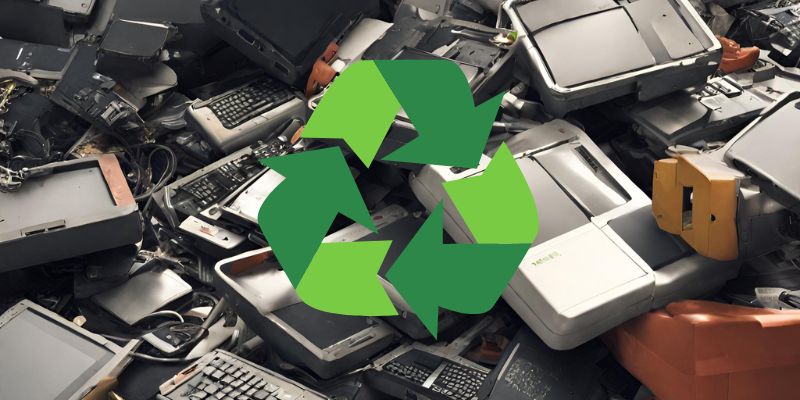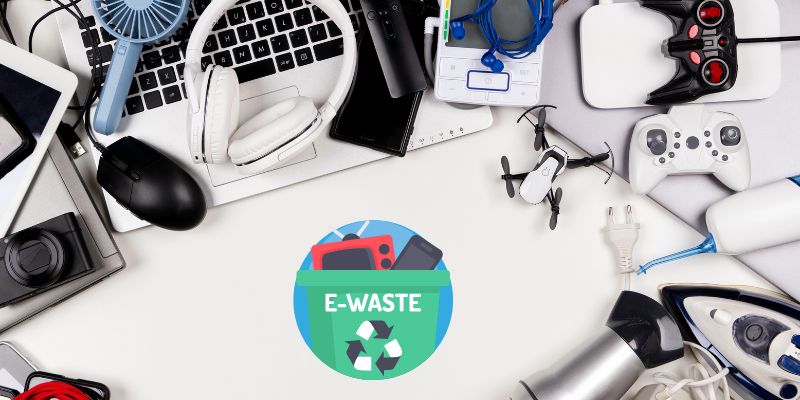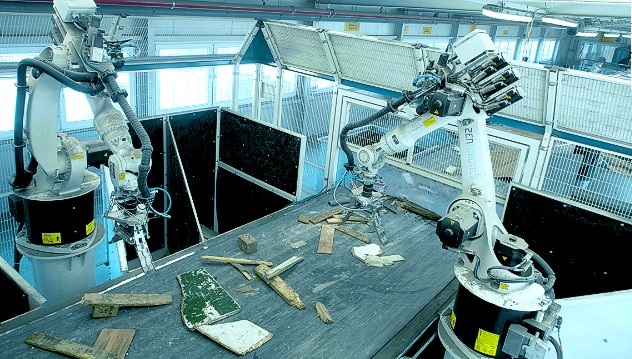E-waste Recycling
E-waste at its core, simply stands for electronic waste. It is a term used to describe or categorize waste caused by or retrieved from electronic products like smartphones, televisions, etc. It is any waste that has a power source. Each year, humans produce about 50 to 60 million tons of e-waste (2–3% of the annual global waste). It may sound minor, on a grand scale, but the damage this 2-3% causes is major. You see, electronics contain materials that become toxic when not stored properly and are trashed at a dump site. In other words, e-waste quickly becomes toxic waste, harmful to the environment, humans, and animals. To make matters worse, e-waste is the fastest-growing waste stream due to our ever-increasing reliance on electronics and short product lifespans.
Hence, e-waste recycling is such a big deal. So what is e-waste recycling?
What is E-Waste?
E-waste recycling is simply the process of turning e-waste into usable items. Most times, this process involves either shredding e-waste into tiny pieces or extracting usable parts from e-waste and then using them in new electronics. E-waste recycling is beneficial to both us and the environment.
By recycling our electronic waste instead of dumping it, we prevent toxic materials like cadmium, mercury, and lead (which are used in everyday electronics) from contaminating the soil and water sources. Another benefit of e-waste recycling is that it eases our dependence on virgin materials (raw materials extracted directly from nature without processing), helping us conserve raw materials. One benefit of e-waste recycling that we absolutely can’t overlook is how e-waste recycling has made tech cheaper, especially with the rise of the refurbished electronics industry.
E-waste recycling: What is it and how it’s done
E-waste recycling is a multi-step process that recovers valuable materials from electronic devices. Here’s a breakdown of the key stages:
- Collection: E-waste is collected through various methods, like drop-off bins at recycling centers, take-back programs offered by electronics retailers, or collection through an ITAD company.
- Sorting and Dismantling: Once at the recycling facility, workers sort the e-waste by type and model. Some items, like batteries and bulbs, are removed for separate processing due to their unique components.
- Shredding: The remaining e-waste is shredded into smaller pieces to facilitate further separation.
- Mechanical Separation: Powerful magnets are used to extract ferrous metals like steel from the shredded mix. Eddy currents, which are electric currents induced by a changing magnetic field, then separate non-ferrous metals like aluminum and copper.
- Other Separation Techniques: Additional methods like infrared light or density separation are employed to isolate plastics and other materials.
- Recovery: The separated materials are cleaned and processed for reuse in new products. Metals can be re-smelted, while plastics can be turned into new plastic components.
Despite how far waste recycling has come, unfortunately, only 17% of e-waste is recycled annually (according to Statista).
Problems of E-waste recycling
E-waste recycling is crucial for our environment, but faces several challenges. Here are some of the major problems:
- Health and Environmental Impacts: Incorrect recycling practices which can be hazardous, often prevalent in developing countries. Workers handling e-waste might lack proper equipment and training, leading to exposure to toxic materials like lead or mercury. These toxins can then contaminate the surrounding environment through air and water pollution.
- Limited Infrastructure: Many regions around the world simply don’t have the infrastructure to handle complex e-waste recycling. Setting up proper dismantling and separation facilities requires a significant investment.
- Complexities of E-waste: Electronic devices are becoming increasingly intricate, containing a mix of materials that can be difficult and expensive to separate. New components and miniaturization add to the challenge.
- Data Security Concerns: E-waste can contain sensitive data. Improper recycling practices could lead to data breaches if hard drives or storage devices aren’t securely wiped or destroyed.
- Lack of Consumer Awareness: Many consumers are unaware of the importance of responsible e-waste disposal and might end up throwing electronics in regular trash, negating recycling efforts.
How You Can Help
Everyone of us can play a role in solving the world’s e-waste problem. So here are some things you can easily start doing right away:
– Stop throwing away your electronics and safely dispose of them.
Instead of tossing that dead battery or broken remote into the dumpster, find out about places near you that collect electronics for recycling.
– Hand Down
If the device you don’t need anymore is still in working condition, consider giving it out to someone who needs it around you. It could be a friend, neighbor, colleague, or even Goodwill.
– Extend Your Device Lifespan
Many times, the reason people throw out electronics is because they’re no longer working. By taking proper care of electronics, you can extend their lifespan. By doing this, you can save both your cash and the environment.
Also, you can consider buying refurbished instead of brand new. Buying a refurbished device extends the device’s lifespan, and it’s also way cheaper than brand new ones. When you buy refurbished items in stores like SmartphonesPLUS, you can rest easy knowing you’re getting a quality item.
– Sell It
Selling your used electronics is one of the best ways to get rid of your used devices. By selling your electronic device, you get paid for a device you’re no longer using. Best of all, companies like SmartphonesPLUS will buy your device even if it’s broken.










